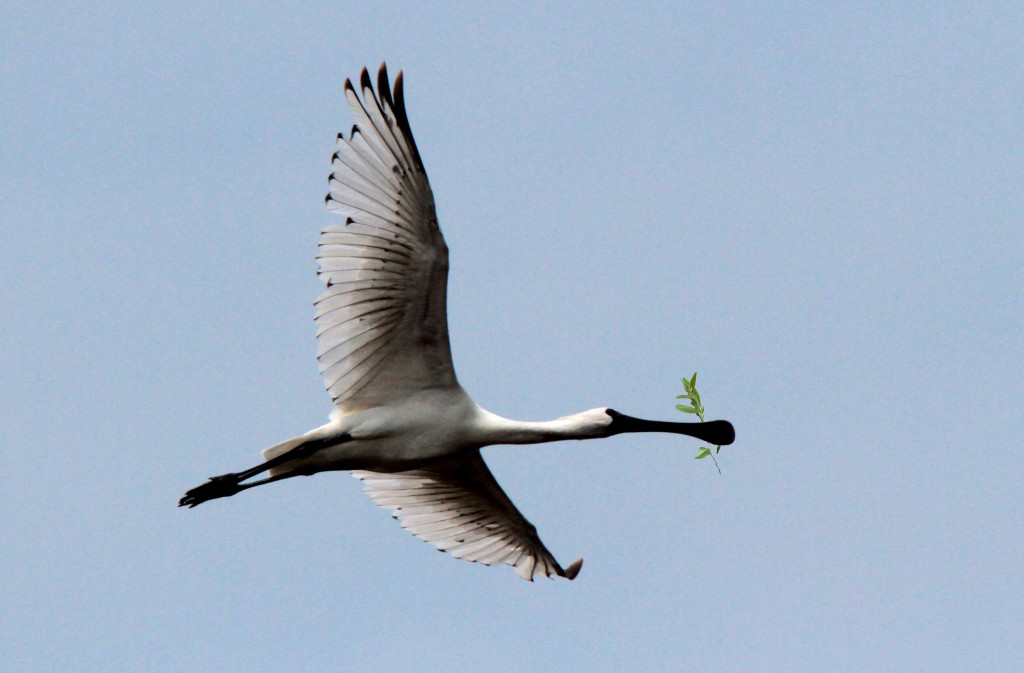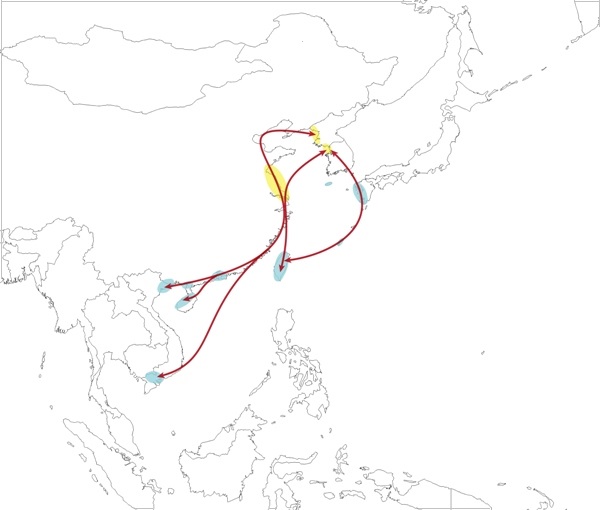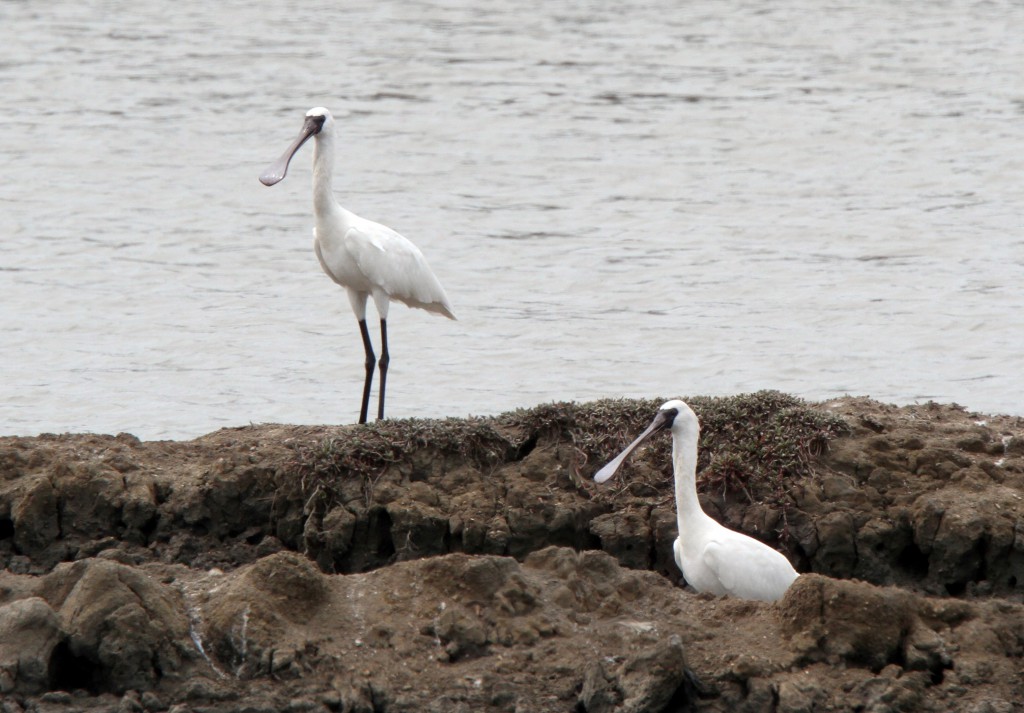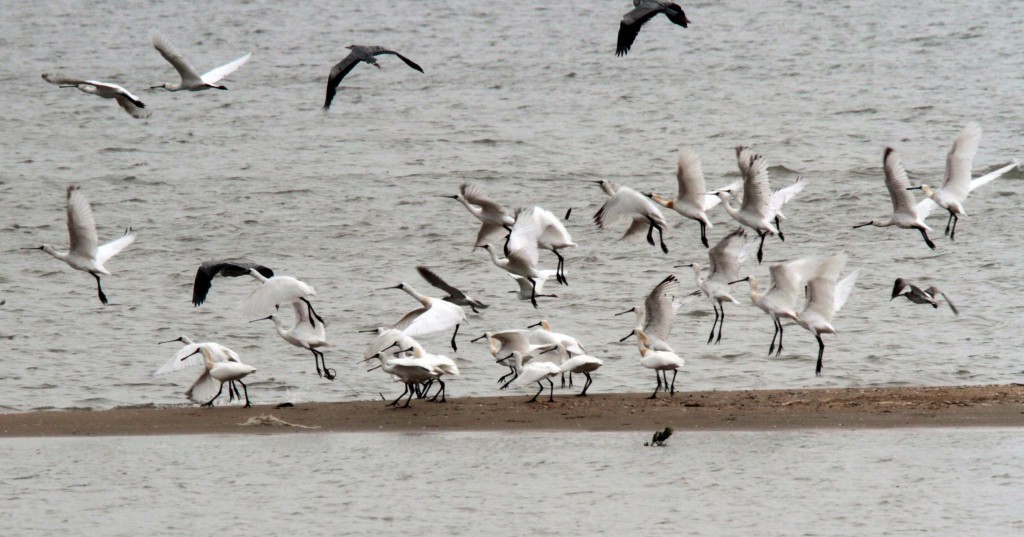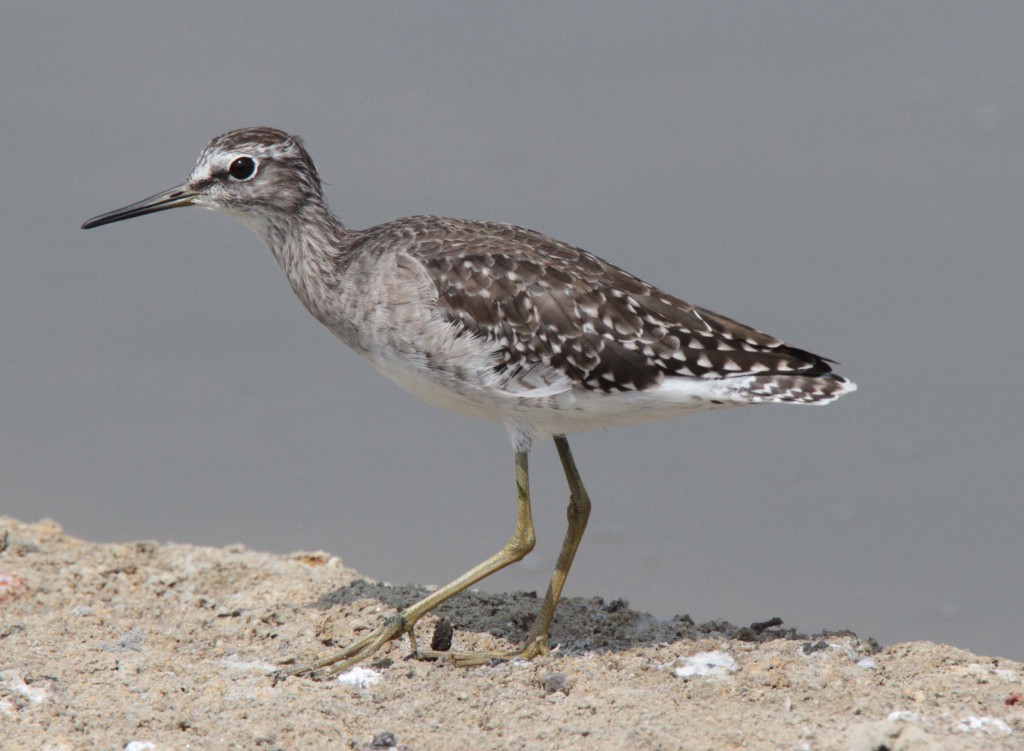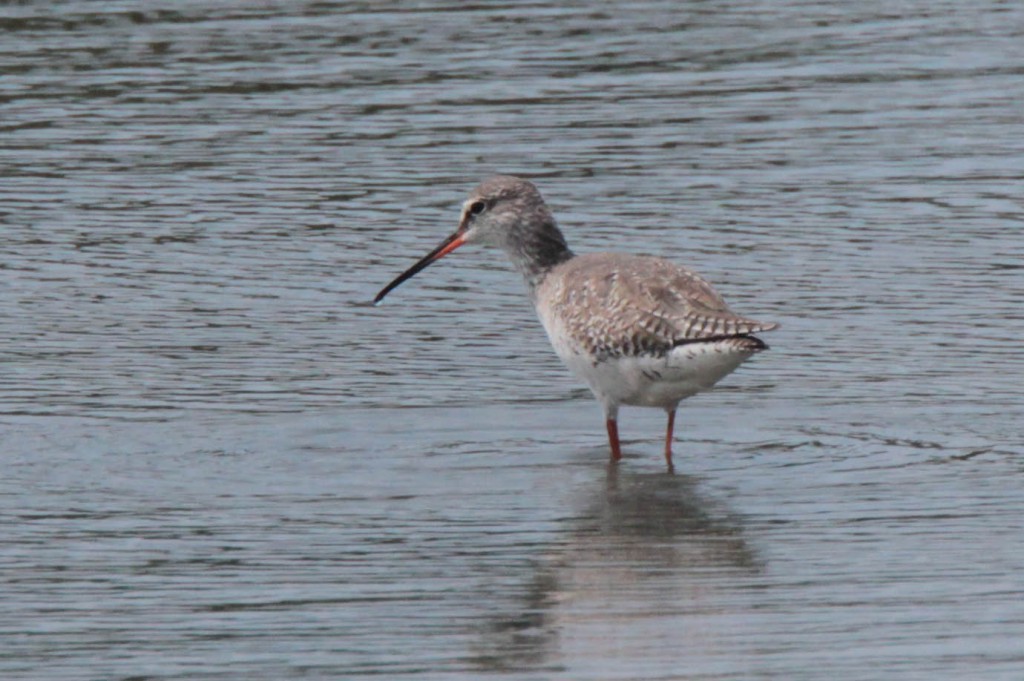John MacKinnon
The dove of peace is still white and still carries an olive branch but it is rather large and has a curious long spoon-shaped bill!
The Black-faced Spoonbill Platalea minor is one of the world’s most endangered bird species. A few years ago there were only a few hundred surviving but thanks to international conservation efforts the numbers have built back to a modest 3000. They breed only in a few sites exactly straddling the border of DPR Korea and RO Korea and demilitarized zone. http://www.eaaflyway.net/about/the-flyway/migratory-waterbirds-in-eaaf/black-faced-spoonbill/.
Here, some 60+ years ago, fierce warfare continued between DPR Korea and its Chinese allies against RO Korea and its United Nations Allies so it is fitting that it is this white bird that now helps bring peace to this troubled corner of the globe and cooperation between former enemies.
The Black-faced spoonbill disperses in winter months to more southerly wetlands of Southern China, Hainan, Vietnam, Japan and the island of Taiwan. So the international program to save the species involves cooperation between protectors of the breeding sites in both DPR and RO Korea and also the protectors of those important wintering grounds. Several international programs are involved including the United Nations Development Programme (UNDP) China Office which is implementing a wetland conservation project under the Global Environmental Facility (GEF).
The UNDP GEF project protects several key wetlands in 6 provinces of China including Hainan and two of the project sites on Hainan are especially important habitat for wintering Black-faced Spoonbills. Chief technical advisor John MacKinnon and national project manager Zhou Zhiqin have just returned from a field check to see how the Hainan population is faring at Dongfang and Xinying and just in time. A message from Spike Millington the Chief Executive of the East Asian-Australasian Flyway Partnership (EAAFP) Secretariat based in Incheon, RO Korea and former CTA for another UNDP biodiversity project in China reports “our Black-faced Spoonbills returned to their breeding sites last week”. So the Hainan birds may be the late arrivals back in Korea or maybe they start to like it in Hainan too much. In any case, the Dongfang flock is gathered together and ready to fly north. On March 24, the team photographed a flock of 32 accounting for almost all of the 34 birds that were reported to have arrived for the winter last September by staff of the nature reserve. So the project has alerted EAAFP Communication Officer Tomoko Ichikawa to expect some more arrivals in the next few days.
Sharing their winter quarters with the spoonbills were other waders already wearing their breeding plumage and ready to head to their own summer nesting grounds including Black-winged Stilts, Wood Sandpiper, Marsh Sandpipers, Spotted Redshanks, curlews and a variety of stints. On the sandbars along the coast a flock of Heuglin’s Gulls wait for the tide to change and further up the coast resident Caspian terns and Oriental Pratincoles prepare to nest in the strand vegetation.

